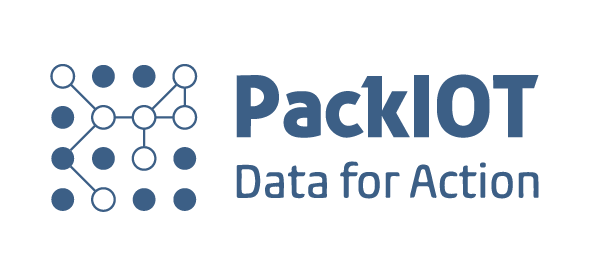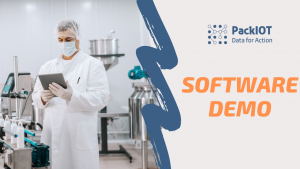By Fernando Pacheco, COO at PackIOT
We have constantly been talking about how digital transformation in the industry should start with baby steps or pilot projects (or MVP, if you are already familiar with this concept). Manufacturing plants around the world have been looking for production optimization and Industry 4.0 solutions, and there is always one question on top of the decision tables: when is the best time to integrate an ERP with your production analytics software?
We will explore this topic throughout this article but one thing is already clear: ideally, you should not integrate any new software with ERP from the start. Example: Are you implementing a MES or an IoT system? The first step is to make sure the roll-out will be a success. After, you can focus on the other integrations.
1_Each thing is a unique thing: ERP
Enterprise Resource Planning is an information system that links all the data and processes of an organization into a single system. The interconnection can be seen from the functional perspective (finance, accounting, human resources, manufacturing, marketing, sales, purchasing, etc.) and from the systemic perspective (transaction processing system, management information systems, decision support systems, etc.).
ERP is a software platform developed to interconnect the various departments of a company, enabling the automation and storage of all business information, which is then provided instantly and accurately, ensuring the decision-making process. This software platform is the backbone of e-business, a transaction architecture that links all the functions of a company, for example, sales order processing, inventory control and management, production and distribution planning, and finance.
So all that you read above about ERP is a concept in a general context. When we think about the manufacturing industry, it is very likely that even small companies have had ERP implemented for many, many years. But they don’t necessarily have production analysis systems, IIOT tools, or MES running in the factory. This means, that when choosing to implement these new systems, you first need to make sure that each of them runs as smoothly as possible. As you might imagine (or remember), a finalized ERP deployment takes a good few years and many mishaps happen right from the start.
2_Start from the beginning
Experts in digital transformation and Industry 4.0 from around the world always give the same tip: when implementing this new culture, start from the ground up. Take initial steps, adjust the mindset of the leadership and the team.
Now think with me: you need to ensure a successful implementation of new software in your plant, you need to get your employees engaged with the new tool, and you need it to deliver the first results on the shop floor as soon as possible, right? And you still want to put an ERP integration in the middle of it all?
Did you understand why we said above that it is better to ensure the maturity of the new system first before taking care of the ERP integration? In other words, avoid taking this step at the beginning!
3_The logic of information layers
Following our discussion, it is important to understand what each end-user wants with each system that is in place in their factory. ERP, initially, is about layers of management and processes, which need vital information from payments, suppliers, supply chain, and other business data.
When you look for a solution for production, optimization, IIOT, and Industry 4.0, you first want to ensure that your shop floor gets the best out of that data, and then take the information collected to the overall systems.
In management, there is a very interesting and practical concept of “company metrics” and ” department metrics”. Not everything that is measured within an area is relevant for an overall view. Can you imagine showing up in the ERP that the sales director made 17 calls this week? This doesn’t make any sense.
Along with this line of thought, first, we need to understand the production data of the new tool implemented. Only then, we are able to extract the relevant information that will be taken to the ERP. Once again: doing this from day one is a very complex task.
4_So, when to integrate?
When the test has been validated and you know clearly what information to take to the ERP. This can take 1 week, 1 month, 6 months, 1 year or 5, it doesn’t matter. What really needs to be taken into consideration is that your tool and your digital transformation process are now clear and now you know which data is relevant for the ERP layer.
5_Simple steps to ensure success at the start of the digital transformation
1- Know in which stage you are in. Understand internally what the company’s gaps are and why you should invest in a digital transformation journey.
2- Work on the culture first, then the tool.
3 – If you don’t have the right skills “in house”, seek outside help from those who have already made it happen.
4- Start with short steps and a clear result to be achieved.
5 – Measure everything you can.
Always think about the business, not only about the tool or process. How can this implementation be a competitive differential? How can it help us reduce costs? How can it increase motivation? How can it help us to have a higher revenue?
You might also like:
Covid-19 Pandemic Drives Manufacturers to adopt a Digital Transformation Strategy
The 5 Steps To Bring Industry 4.0 Into Your Factory
My Packaging Plant Already Collects Data. And Now What? Which Questions Should Be Answered?
How An Analytics System Can Help You Reshape The Culture Of Your Manufacturing Team




